“Shay,” she said, “it is getting more difficult imagining raising and teaching a child in this time and age. With everything happening, it’s scary thinking about what children will encounter outside of our 4 walls.” Many people have disclosed similar thoughts. Therefore, it is now more important than ever for parents and teachers to come together to integrate a strong habit of mind in children.
Habit Definition
Habit of mind is the intellectual behavior taken when faced with a problem or life experience you don’t have an immediate answer to. The skills can’t be taught as a textbook answer. They require practice and development. The ultimate outcome are problem solvers that can act intellectually through any problem. It’s identifying one self as a problem solver, thinker, and lifelong learner.
Habit Forming
So, “how can we engrain these habits in kids?” Let’s dive in…
1) Model the Habit of Mind
Imagine this: Parents and teachers begin with the end in mind. They have a vision for themselves, create a vision board for this dream, look at it daily, write down their goals every day, and track them on a habit tracker. They involve kids in their own version of this.
Kids watch and get inspired. The next time they want to get accepted onto the football team, win the talent show, or heck, find the cure to cancer, they might just follow your lead! And boy, when they reach that goal, they will be so proud of themselves!
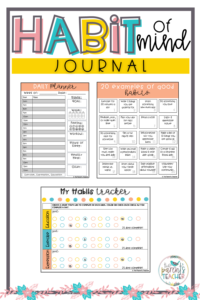
2) Teach about the Habit Meaning
Learn the habit meaning with the kids and put reminders around the home and classroom. Celebrate the progress in between, and applaud the ultimate achievement.
In the classroom, we spent 7 weeks learning about habits during morning meetings. I hung up posters, and we did a variety of activities to learn about and practice what it sounds, feels, and looks like to build a good habit. We tracked our habits and referred back to them throughout the year.
This not only helped my students, but made such a difference in my own lifestyle. I found myself drinking 80 oz. of water every day, and to this day 5 years later, I don’t go a day without drinking enough water. I made this a habit with my students that year and it has stuck with me since then. The lessons we learned for 35 days stuck for a lifetime. As parents and teachers, you can do the same for yourself, and your kids.
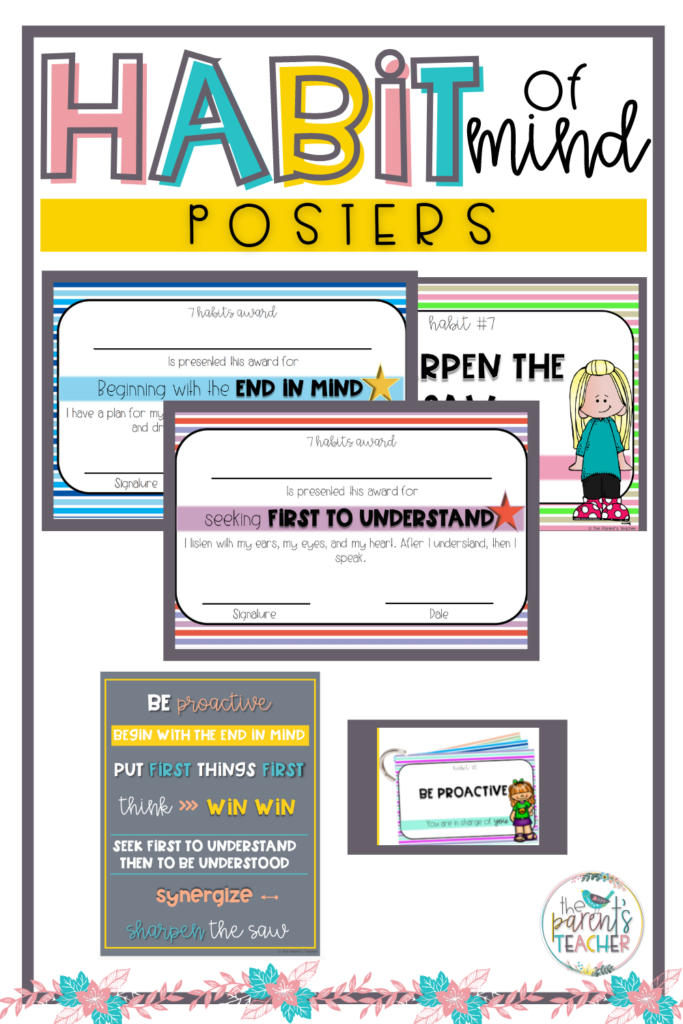
3) Habit Tracker Ideas
In my example above, each of my students taped a habit tracker onto their desk. A lot of their habits were home-based. Regardless, they physically checked it done every morning in the classroom. Some families helped encourage the chosen habits at home. I saw that kids whose families were also involved, lead to more positive results.
In an ideal situation, you could use a habit tracker pdf to get parents and teachers involved at home and school.
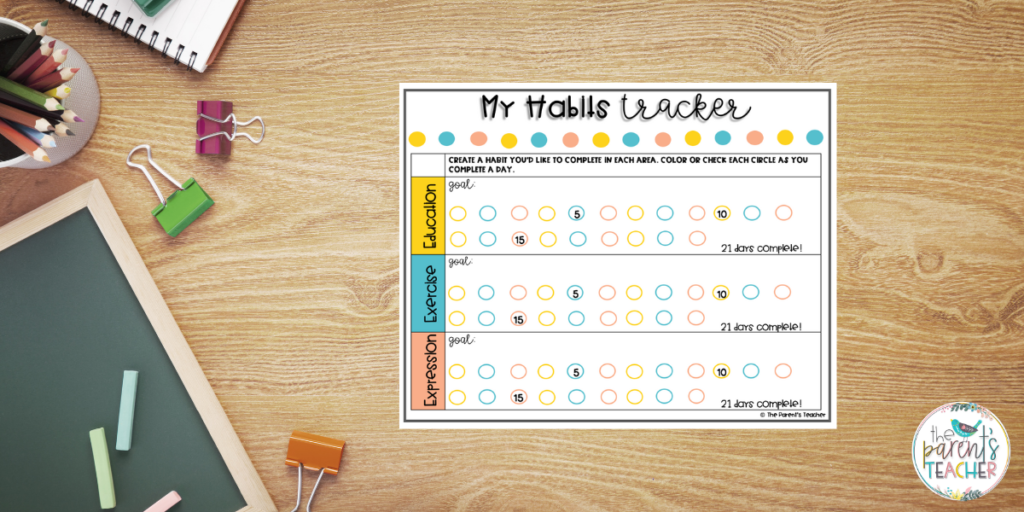
4) Practice Habit Examples
As I mentioned previously, the habits of mind are more about intention and skill. You can’t practice them all, but practicing a few scenarios help children address and handle new situations independently. These social emotional learning activities allow children to educate, express, and exercise good habits. That way, when an unfamiliar situation arises, they have enough practice to make the right decisions.
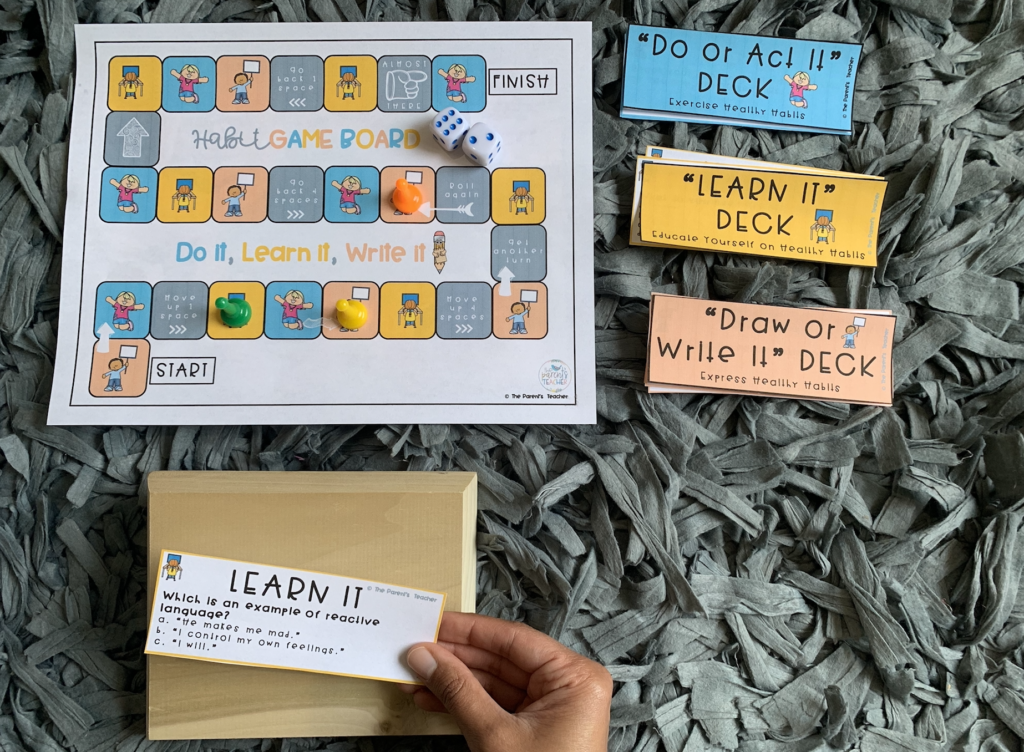
Going back to the posed question in the beginning – yes, it can be scary raising kids in this time. These activities are tools for success so children are able to tackle real world situations successfully.
5) Notice the Habit and Build a Routine
“Achieving new milestones, even little ones, gives us a sense of accomplishment and pride.” Rachel Hollis, from “Girl, Stop Apologizing.”
The reward of achieving a habit, is the habit itself. At the same time, it’s important to recognize and notice progress.
These habit certificates are a great way to recognize progress so children are encouraged to keep a growth mindset, and continue to work on their goals.
We can’t teach kids how to face every problem in life, but we can provide them with tools and skills to develop a strong habit of mind. So that when they are out facing the world outside of our 4 walls, we can sleep at night knowing that they can take care of themselves. Parents and teachers, let’s start working together with the ultimate goal to raise kind, happy, healthy and educated kids.
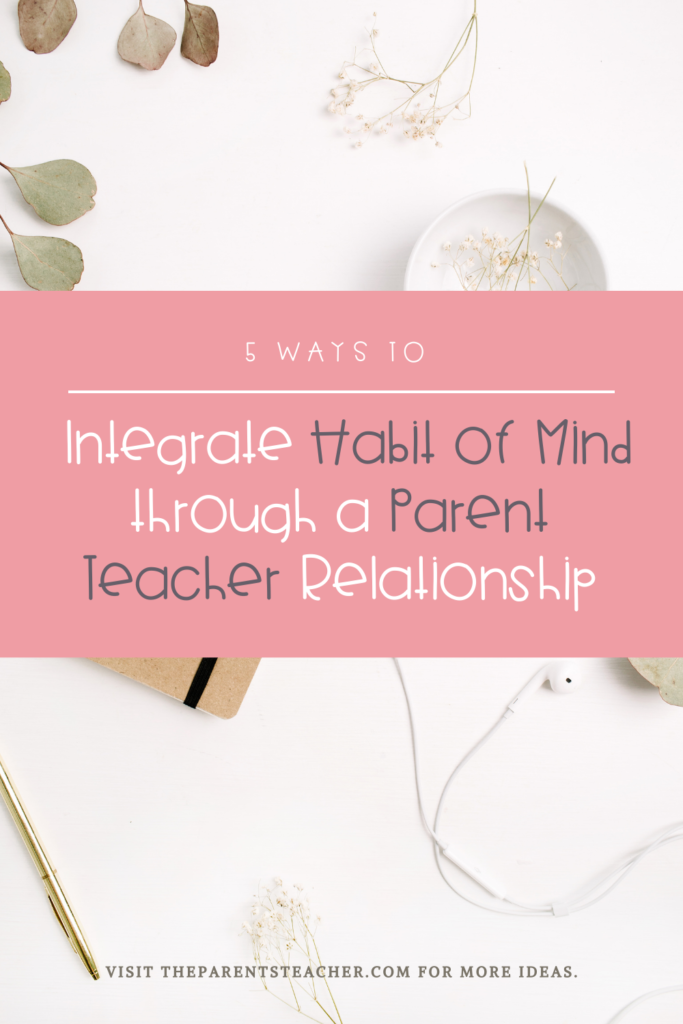
[/et_pb_text][/et_pb_column][/et_pb_row][/et_pb_section]
